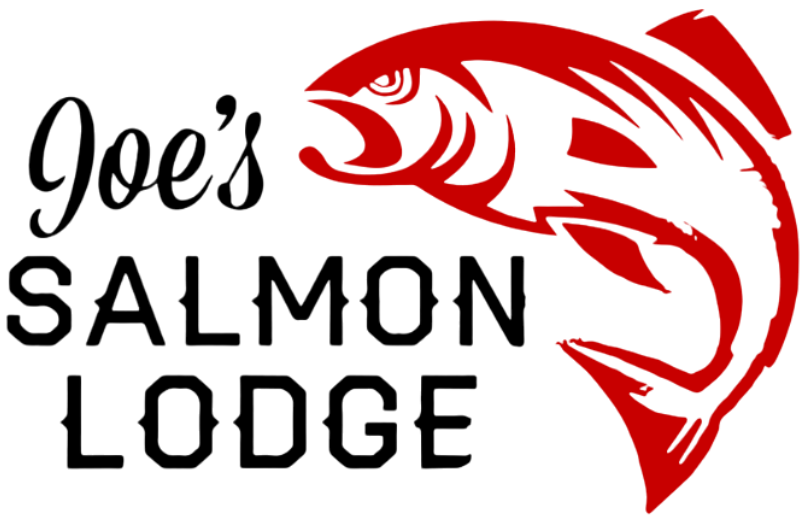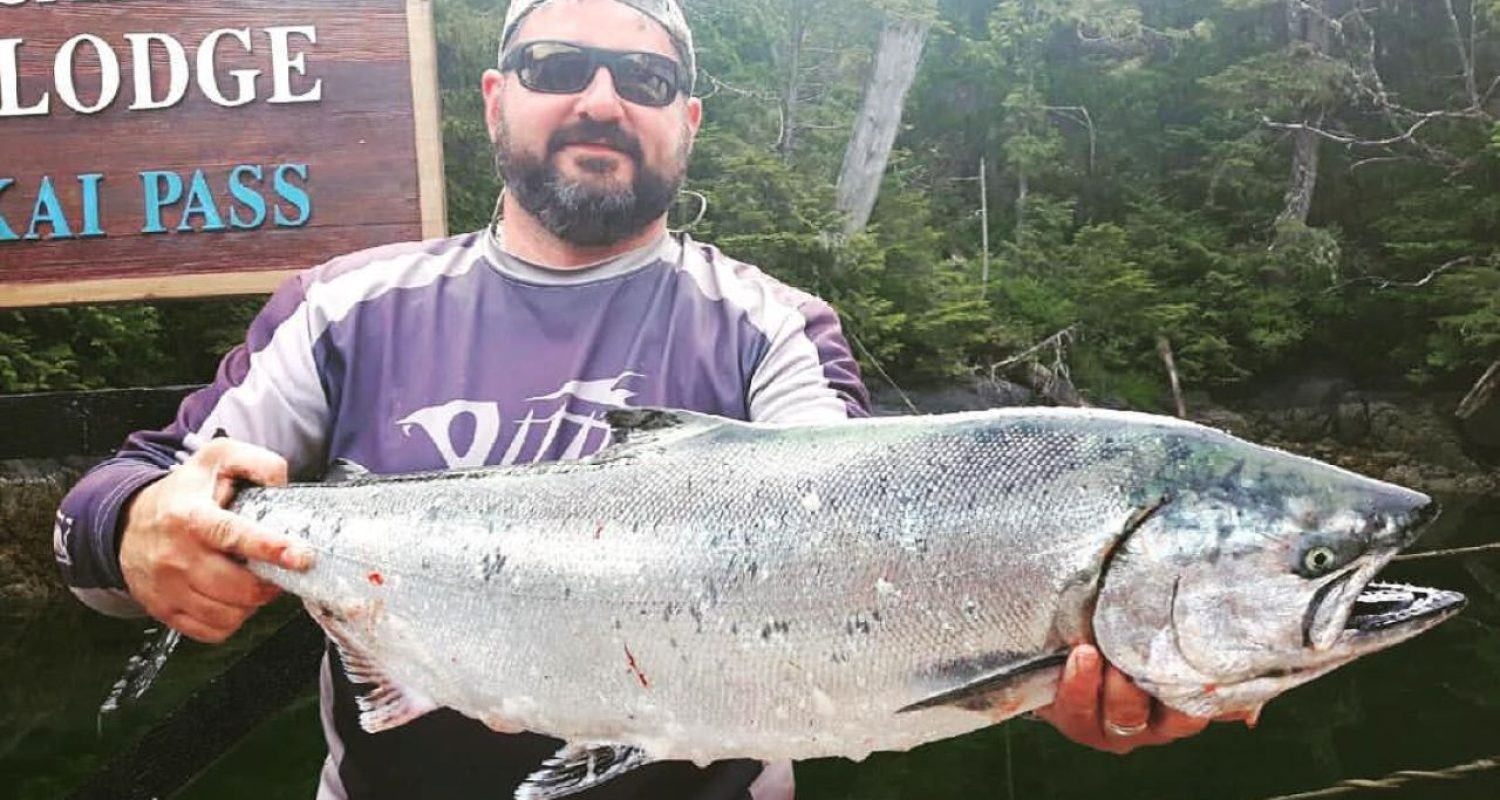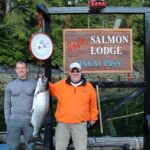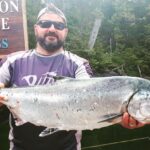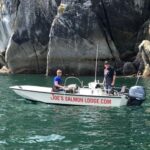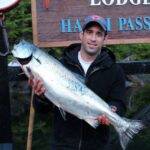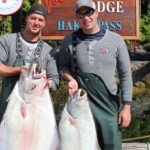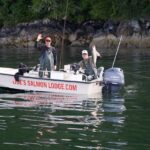Fishing for salmon in British Columbia (BC)
Fishing for salmon in British Columbia (BC), Canada, is a dream for many anglers due to the region’s rich salmon populations and stunning natural landscapes. Understanding the best time to fish for salmon and the optimal techniques can significantly enhance your success. This article explores the ideal seasons, tidal impacts, and effective bait and lures to use when salmon fishing in BC.
The Best Time to Fish for Salmon in BC
Seasonal Considerations
Salmon fishing in BC is highly seasonal, with different salmon species peaking at various times throughout the year. Here’s a breakdown of the best times to target each of the major salmon species:
Chinook Salmon (King Salmon)
Chinook salmon are the largest and most prized salmon species in BC. The best time to fish for Chinook salmon is from May to September, with peak months typically being June and July. During this period, Chinook salmon return to rivers to spawn, making them more accessible to anglers.
Coho Salmon (Silver Salmon)
Coho salmon are known for their acrobatic fights and aggressive behavior. The prime months for Coho salmon fishing are July to October, with September often being the peak month. Coho can be found in both freshwater and saltwater, making them a versatile target.
Sockeye Salmon
Sockeye salmon, prized for their rich, red flesh, are most abundant from June to August. The Fraser River is a popular destination for Sockeye fishing, particularly during the peak run in July.
Pink Salmon
Pink salmon, also known as “humpies,” have a two-year life cycle, meaning they are abundant every other year. The best time to fish for Pink salmon is during the odd-numbered years, from late July to early September. They are especially prolific in the Fraser River and its tributaries.
Chum Salmon
Chum salmon, known for their distinctive calico pattern, run from October to December. These late-season salmon provide excellent fishing opportunities when other salmon runs have ended.
Tidal Impacts on Salmon Fishing
Tides play a crucial role in salmon fishing, particularly in coastal areas where tidal movements can significantly influence salmon behavior. Understanding how tides affect salmon can help you time your fishing trips for maximum success.
Incoming vs. Outgoing Tides
- Incoming Tides: Salmon often move closer to shore during incoming tides, making them more accessible to shore-based anglers. As the water level rises, salmon move into estuaries and tidal rivers to feed and prepare for their upstream journey.
- Outgoing Tides: During outgoing tides, salmon may move back into deeper waters. This can be a good time for boat-based anglers to target salmon in deeper channels and near the mouths of rivers.
Slack Tides
Slack tides, the period between the incoming and outgoing tides, can be a productive time for salmon fishing. During slack tide, water movement slows down, and salmon are often more relaxed and willing to strike at bait or lures. This can be an excellent window for both shore and boat-based fishing.
Effective Bait and Lures for Salmon Fishing
Choosing the right bait and lures is crucial for successful salmon fishing. Different salmon species and conditions may call for specific types of bait and lures. Here are some of the most effective options:
Herring
Herring is one of the most popular and effective baits for salmon fishing in BC. Its natural scent and movement make it irresistible to salmon. Herring can be used in various forms, including whole, cut, or brined, and can be trolled or mooched.
- Trolling with Herring: When trolling with herring, use a downrigger to keep the bait at the desired depth. A slow, steady troll is usually most effective, allowing the herring to swim naturally and attract nearby salmon.
- Mooching with Herring: Mooching involves drifting with the current while letting the herring sink to different depths. This technique works well in areas with strong currents and can be very effective for Chinook and Coho salmon.
Squid
Squid is another excellent bait for salmon, particularly for Chinook and Coho. Squid’s natural movement and scent attract salmon, and it can be used in various ways, such as whole or cut into strips.
- Trolling with Squid: Similar to herring, trolling with squid can be very effective. Using a hoochie (squid lure) or attaching a piece of squid to a flasher can entice salmon to strike.
- Jigging with Squid: Jigging involves vertically lifting and dropping the bait to mimic the movement of prey. This technique can be particularly effective for Coho salmon, which are known for their aggressive strikes.
Flasher Lures
Flasher lures are highly effective for salmon fishing, especially when used in combination with bait like herring or squid. Flashers create a visual and vibrational attraction that draws salmon in from a distance.
Dodgers and Flashers: Dodgers and flashers are designed to create a flashing, darting motion that mimics a fleeing baitfish. When used with a trailing bait or lure, they can be deadly for attracting salmon.
Spoons and Spinners: Spoons and spinners are also effective lures for salmon. They come in various sizes, colors, and designs, allowing anglers to match the lure to the conditions and the target species. Silver, blue, and green are popular colors for salmon fishing lures.
Artificial Bait
Artificial bait, such as soft plastic lures and imitation baitfish, can be effective for salmon fishing. These lures are designed to mimic the appearance and movement of natural bait, attracting salmon with their realistic presentation.
- Soft Plastics: Soft plastic lures, such as swimbaits and grubs, can be rigged on jig heads or used with a flasher. They come in various sizes and colors, allowing anglers to experiment with different combinations to find what works best.
- Imitation Baitfish: Imitation baitfish lures, such as crankbaits and stickbaits, can be highly effective for salmon. These lures are designed to mimic the movement of small fish, attracting salmon with their lifelike action.
Tips for Successful Salmon Fishing in BC
Know the Regulations
Before heading out, it’s essential to be aware of the current fishing regulations in BC. Regulations can vary by location, species, and time of year. Make sure to check for any restrictions on size, catch limits, and specific gear requirements. Keeping up-to-date with regulations ensures that your fishing trip is both legal and sustainable.
Use the Right Gear
Having the right gear is crucial for successful salmon fishing. This includes using appropriate rods, reels, lines, and terminal tackle. For salmon fishing, medium to heavy-action rods with strong, high-capacity reels are recommended. Fluorocarbon or braided lines are preferred for their strength and sensitivity.
Pay Attention to Water Conditions
Water conditions, including temperature, clarity, and current, can significantly impact salmon behavior. Salmon are more likely to be active in cooler water temperatures, typically between 50°F and 60°F. Clear water conditions can make salmon more cautious, so using lighter lines and more natural presentations may be necessary.
Follow the Salmon
Salmon are migratory fish, and their location can change throughout the day and season. Paying attention to local reports, talking to other anglers, and observing fish movement patterns can help you locate salmon more effectively. Areas near river mouths, underwater structures, and current breaks are often productive spots.
Be Patient and Persistent
Salmon fishing can require patience and persistence. There may be periods of inactivity, but staying focused and continuously adjusting your techniques can pay off. Changing your bait, lures, and fishing depths can help you find what works best on any given day.
Take Advantage of Tidal Movements
As mentioned earlier, tides play a crucial role in salmon fishing. Planning your fishing trips around incoming, outgoing, and slack tides can increase your chances of success. Salmon are often more active during these times, and understanding their movements can help you position yourself in the right place at the right time.
Practice Catch and Release
While keeping a few salmon for the table is part of the experience, practicing catch and release helps preserve salmon populations for future generations. Handle fish with care, use barbless hooks, and release any unwanted or undersized fish quickly and safely.
Fishing for salmon in British Columbia, Canada, offers an unparalleled experience for anglers. Understanding the best times to fish, the impact of tides, and the most effective bait and lures can significantly enhance your success. Whether targeting Chinook, Coho, Sockeye, Pink, or Chum salmon, BC’s waters provide abundant opportunities for a memorable fishing adventure.
By paying attention to seasonal patterns, tidal movements, and using the right gear and techniques, you can increase your chances of landing these magnificent fish. With its stunning landscapes and rich salmon populations, British Columbia remains a top destination for salmon fishing enthusiasts. Plan your trip, prepare your gear, and get ready for an unforgettable salmon fishing experience in BC.
